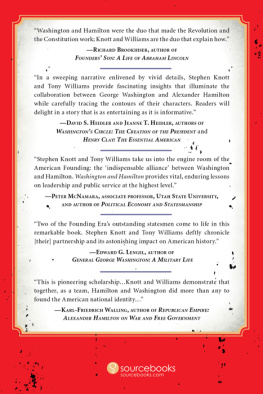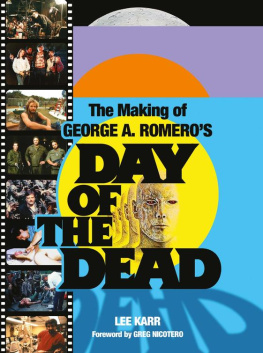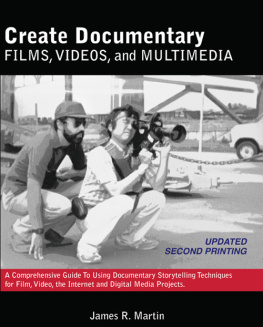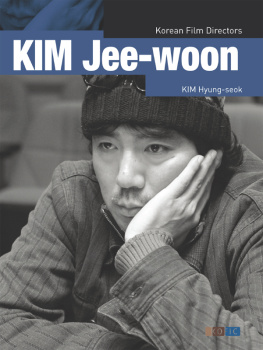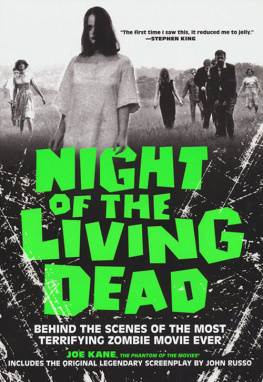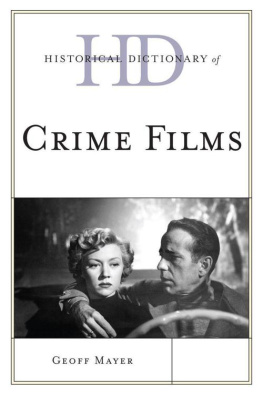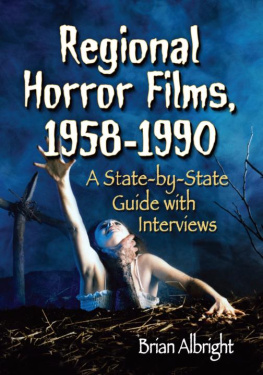George Romero: Revealing the Monsters within Us
Tom Seligson / 1981
From Rod Serlings The Twilight Zone Magazine, August 1981, 1217. Reprinted by permission.
With his first film, Night of the Living Dead (1968), director George Romero made a spectacular debut. Shot for a mere $70,000 with a cast of Pittsburgh unknowns, the film did for zombies what Jaws later did for sharks. It soon became a horror cult classic, grossed over $10 million, and introduced Romero as a master of the horror genre.
Many young directors would have caught the next plane to Hollywood, but Romero is a maverick. Remaining in Pittsburgh and worried about being typed as a horror director, he followed up Night with Its Always Vanilla (1970) and Jacks Wife (1971), two films that were not widely distributed and did little for his career. Still, he kept working, churning out commercials, sports specials for television, and a politically oriented sf feature called The Crazies (1972).
It was his return to the horror genre in Martin (1977) that drew renewed critical attention to this staunchly independent filmmaker whom Newsweek hailed as a dazzling stylist whose balance of wit and horror is the best since Hitchcock. Then came Dawn of the Dead (1979), a sequel to Night, which Rolling Stone picked as the number-one film of the year and which has grossed $55 million to date.
Romeros latest film, Knightriders, is about modern-day knights who joust on motorcycles, and what it lacks in horror it makes up for in spectacle. Future films include the film version of Stephen Kings The Stand; Creepshow, based on Kings first original screenplay; and Day of the Dead, the third film in Romeros zombie trilogy.
Romero is forty-one, married to the actress Christine Forrest (who has appeared in most of his films), and continues to live in Pittsburgh.
Hes a hulking man whose size would frighten you on a deserted streetthat is, until you saw his face. With his gray flecked beard, soft blue eyes, and dimples, this master of horror couldnt scare a pussycat.
TZ: Youve been making movies ever since you were young. Were you always interested in horror films?
Romero: I loved all genre filmshorror movies as well as war pictures and cowboy films. Whenever one was at a neighborhood theater or on television, Id watch it. Thats the way I learned how they worked.
However, it was just circumstance, the fact that Night of the Living Dead was my first picture, that I got a reputation as a director of horror films.
I chose the genre because I liked it, and because I wanted to do something commercial.
TZ:Night of the Living Dead has come to be considered a classic independent film. How did you make it for so little money?
Romero: First of all, it was based on a short story that I wrote. I didnt have to buy the rights. Then a friend of mine and I collaborated on the screenplay. The production was also very simple. At the time, I had a small film company going. We were doing commercials primarily, but we had all the hardware and a crew of people, and thats what we used to make the film. Plus we used a lot of friends in the casteven some of the advertising people we were working with in Pittsburgh. They came out to play the zombies. There was a great deal of local cooperation, because we were the first feature film based out of Pittsburgh.
TZ: Were the actors professional?
Romero: Three or four of them were. But as professional as you can get as an actor in Pittsburgh means doing radio or television. Primarily the cast was friends and people who showed up.
TZ: Ive heard you were unable to get a major studio to distribute the film. Why do you think you had so much trouble?
Romero: Well, for one thing, I really didnt know what I was doing.
After I made the film, I literally threw it in the trunk of the car and brought it to New York. The first studio I called was Columbia, and I was surprised when they told me to come on in with the film. They held it for three months. They kept saying, Its great and Were thinking about it. But finally they turned it down, because the film was in black and white, and it was hard to get drive-ins to play black and white pictures.
The next studio I went to was AIP. They said, Change the ending, and youve got a deal.
TZ: How did they want it changed?
Romero: They didnt want the hero to die. But I refused to do it. It would have changed what the picture was about. By this time, five months had gone by, and I decided to forget the major studios and get my own sales rep. Finally the Walter Reade-Continental chain made an offer, and I took it.
TZ: Were you surprised when Night of the Living Dead became such a success on the midnight cult circuit?
Romero: Very muchalthough that was in its second wave. The film was an immediate hit on the drive-in circuit. Thats what a lot of people dont realize. It made a lot of money right away. In fact, the only money that it ever returned to us was during that first nine months.
After that, the film sort of dropped out of existence for about a year and a half. Then Walter Reade released it on a double bill with a film called Slaves. Rex Reed and some of the other critics wrote that it was better than Slaves. Then the Elgin and the Waverly and a couple of other theaters started to play it at midnight. It began to get international press, and that really surprised me. I knew that it was a good horror film, but by this point, all I could see in it were the flaws, the things I wished I could go back and correct.
TZ: Despite your own dissatisfaction, the films success was certainly important to your career.
Romero: Yes and no. I was able to raise the money right away to make more movies. But in retrospect, I think it happened too quickly. Though I did have ideas for other films, I had no idea what the business was about. I was just a guy making beer commercials in Pittsburgh.
TZ: Ive read that you were reluctant to do another horror picture right away, for fear youd be typed as a horror director.
Romero: Thats true. So what did I do? I went and made two films that probably six people saw Its Always Vanilla and Jacks Wife. I learned a lot from them in terms of developing as a filmmaker, but what they really taught me was the nature of the film business. I learned that the film industry is not going to accept serious little dramas from some up-start in Pittsburghespecially if the films have no stars. As they say in the biz, theres no bottom-side protection. Those two films taught me what the odds were against that kind of small personal film. I still dont think those films are bad, I just think they were the wrong kind of film to make at that stage in my career.
TZ: Is that why you returned to the horror genre?
Romero: No, because I didntat least not right away. After those two films, I got involved with a small independent New York distributor, Cambist, and I made The Crazies. Its a disaster film about a bio-weapons spill. This film didnt hit, either, but in this case the problem was not with the film, but with the handling. When the distributor saw the rough cut, he thought he had Jaws on his hands. Consequently he tried to open it too big, and he spent a lot of money just opening in New York. It was a lot of money for him, but it wasnt enough to compete with the big studios. He ended up having to shelve the film.


